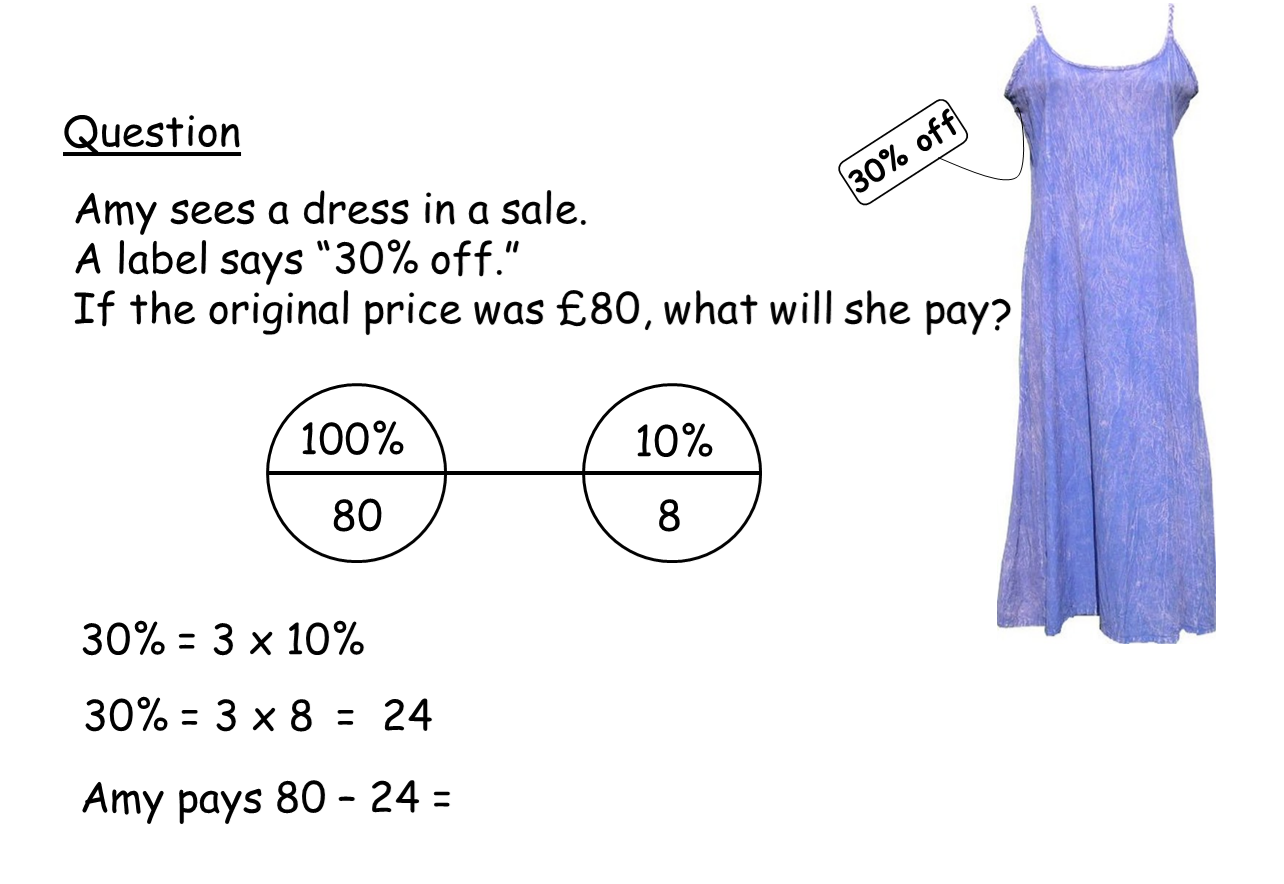The introduction to this PowerPoint lesson asks students to brainstorm and identify as many different uses of percentages in everyday life.
After this, students are introduced to the method of calculating percentages without a calculator, using 10% as the starting point and building block (eg Find 36% – first find 10%, then half 10% to find 5%, divide 10% by 10 to find 1%. So 36% = (3 x 10%) +5% +1%.
Slides 28-33 are the worksheets.
KS3 Maths Curriculum Area
Number Define percentage as ‘number of parts per hundred’, interpret percentages and one quantity as a percentage of another, compare two quantities using percentages, and work with percentages greater than 100%
Dave Wilson is a head of maths in Bury. You can find his resources on his TES page davewilson and you can follow him on Twitter at @DLWilson_maths.










